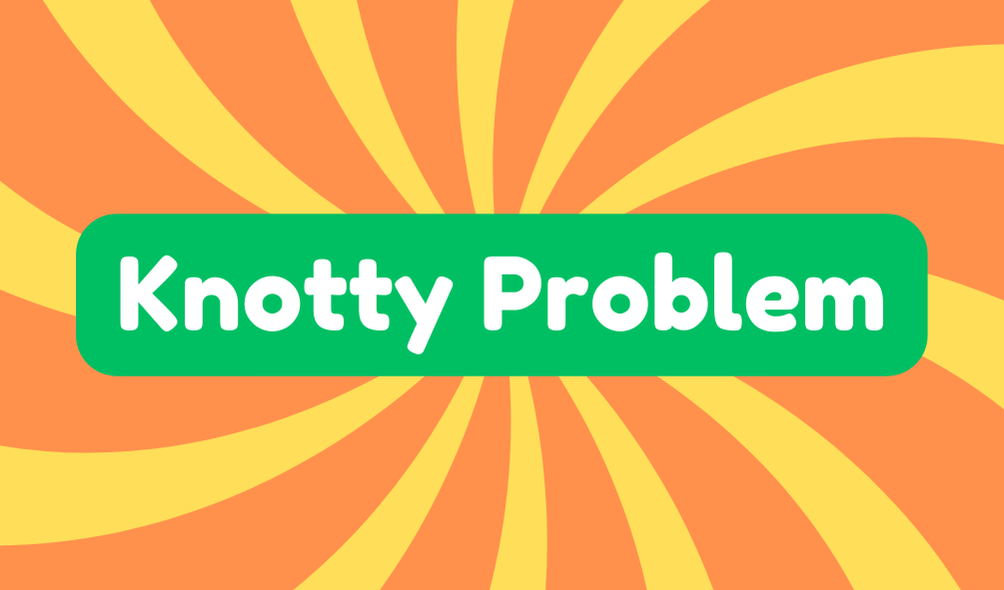A "knotty problem" refers to a complex issue that needs thoughtful resolution. Its origins tie back to the challenges of working with intricately tangled materials, like knotty wood. The term also draws from the famous Gordian knot, symbolizing difficult puzzles. In everyday life, you might encounter a knotty problem while maneuvering budget constraints or team conflicts. Phrases like "solving a knotty problem" highlight the effort involved in overcoming such challenges. Today, knotty problems are everywhere, especially with rapid technological and social changes. If you look deeper, you'll discover even more about their significance in our lives.
Synonyms
When grappling with a knotty problem, you might find it helpful to contemplate some synonyms that convey similar meanings. These terms can enhance your understanding of complex challenges and intricate dilemmas you face. Consider these four alternatives:
- Conundrum – A riddle or puzzle that seems puzzling.
- Enigma – Something mysterious or difficult to interpret.
- Quagmire – A complex and precarious situation that's hard to escape.
- Dilemma – A situation requiring a choice between equally difficult options.
Using these synonyms not only broadens your vocabulary but also sharpens your insight into the nuances of problems. Remember, recognizing the various shades of meaning helps you navigate challenges with greater skill and creativity, ultimately leading to innovative solutions.
Example of Sentences
Exploring the concept of a knotty problem can be more insightful through practical examples. You might encounter knotty problems in everyday situations, such as:
- Deciding how to allocate a limited budget for multiple projects.
- Developing effective brainstorming strategies to ignite a creative team discussion.
- Maneuvering conflicting opinions during group meetings.
- Implementing problem-solving techniques to overcome unexpected setbacks.
These examples illustrate how complex challenges can arise in various scenarios. Tackling these knotty problems requires innovative thinking and collaboration. You'll often find that breaking down the issues and employing different problem-solving techniques can yield surprising results. Embracing these challenges rather than avoiding them can ultimately lead to significant personal and professional growth.
Origin
The term "knotty problem" evokes images of something intricate and challenging, drawing connections to both tangible and metaphorical tangles. Its origins likely stem from the complex knots found in trees, where the wood becomes difficult to work with. This idea of frustrating complexity connects to the broader problem-solving history, where challenges require significant mental effort to untangle. While there's no definitive origin, the phrase hints at various situations that defy simple solutions, possibly linking to the famous Gordian knot. Such metaphors remind us that knotty problems aren't just common; they're emblematic of our struggle to navigate complicated issues in life. Understanding these origins can inspire innovative approaches to tackle contemporary knotty problems effectively.
Collocations
Both writers and speakers often encounter several common collocations that enhance the expression of "knotty problem." Phrases like "knotty problem at hand" and "addressing a knotty problem" frequently appear in discussions about complex challenges. Here are some effective collocations to bear in mind:
- Navigating knotty dilemmas
- Untangling knotty challenges
- Confronting a knotty issue
- Solving a knotty problem
Using these phrases adds depth to your communication, emphasizing the complexity of the situation. However, it's essential to recognize that while these collocations enrich language, they don't necessarily simplify the challenges at hand. Instead, they reflect the real struggle in overcoming knotty problems, encouraging innovative thinking amidst complexity.
How to Use in Everyday Language
When tackling everyday conversations, you can easily incorporate "knotty problem" to describe issues that require careful consideration. Using this phrase shows you're aware of the complexities around you, and it invites others into a discussion about creative problem solving. Instead of oversimplifying, consider emphasizing how effective teamwork can be essential in addressing these knotty problems. For instance, when discussing a project at work, you might say, "We really have a knotty problem on our hands." This approach opens the floor for brainstorming and solutions, encouraging collaborative thinking. It also subtly acknowledges the challenge without dismissing its significance. Remember, recognizing knotty problems can be the first step toward finding innovative solutions in our increasingly intricate world.
Why Is It Still Relevant Today?
Knotty problems continue to resonate in today's fast-paced world, where complexities abound in various contexts, from technology to social issues. You'll encounter situations demanding innovative solutions and effective problem-solving strategies regularly. Cognitive complexity plays a significant role here, as it requires you to think critically, break down problems, and tackle them with fresh ideas. Today's challenges are often interwoven with multiple factors, making them harder to resolve. Ignoring this reality can lead to oversimplified solutions that miss the mark. Embracing the knotty nature of these issues can foster collaboration and creativity. So, don't shy away from complexity; instead, plunge into, adapt, and apply various methods to decode today's knotty problems. The relevance isn't going anywhere soon.







